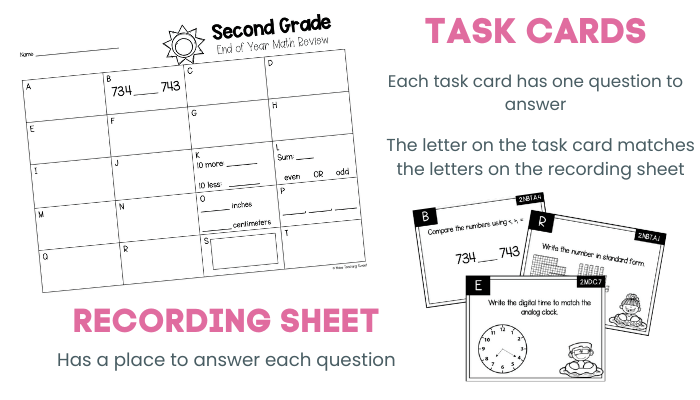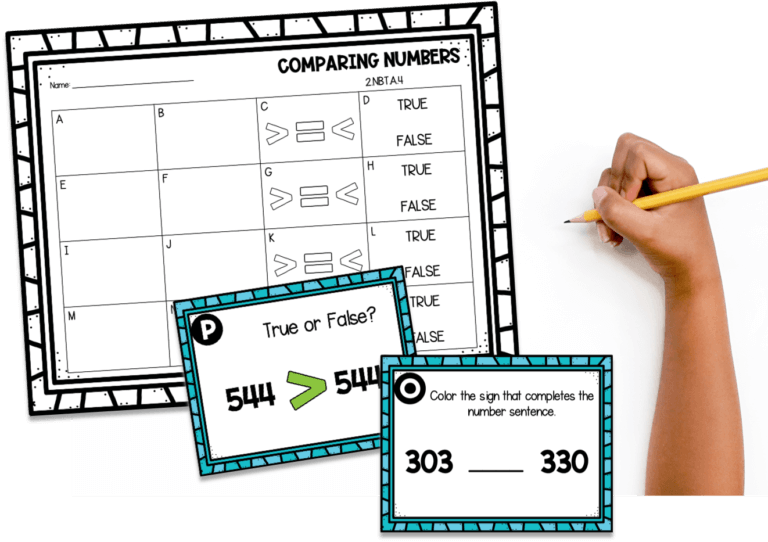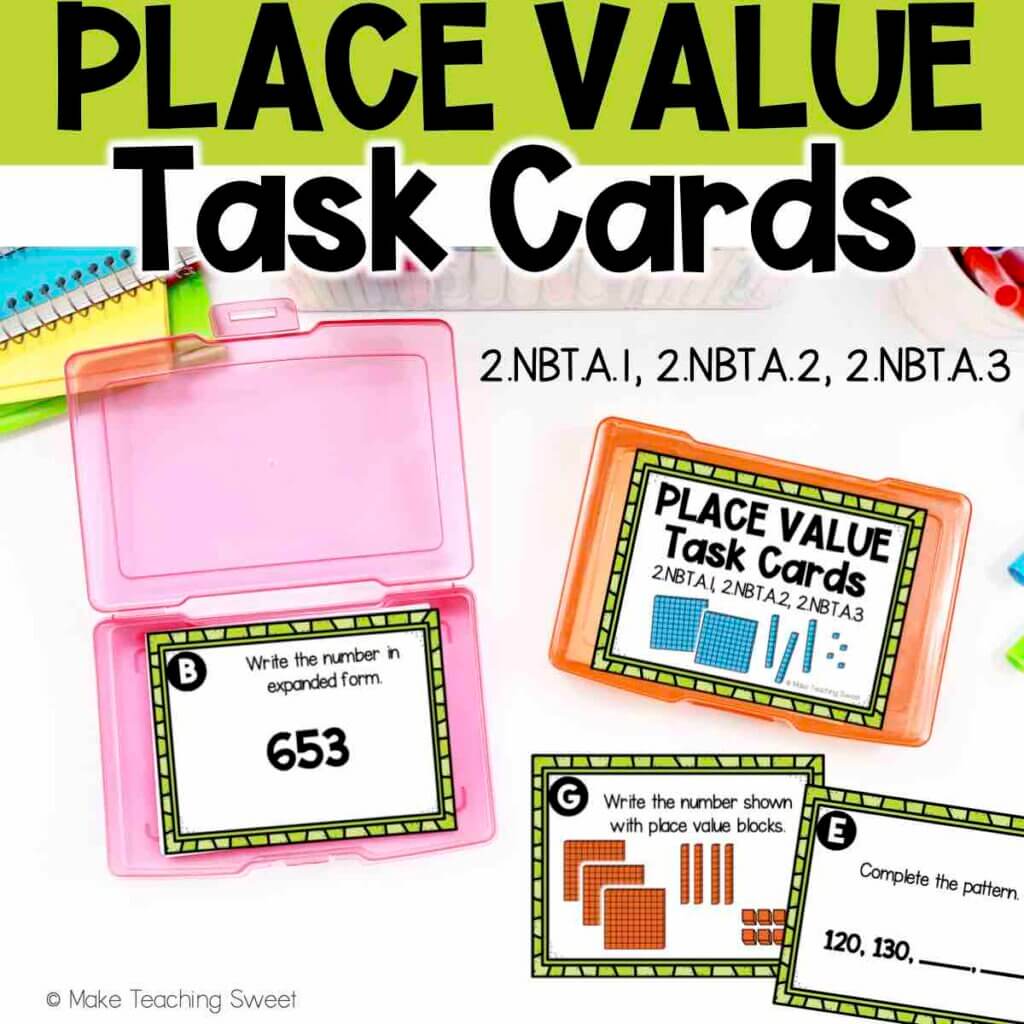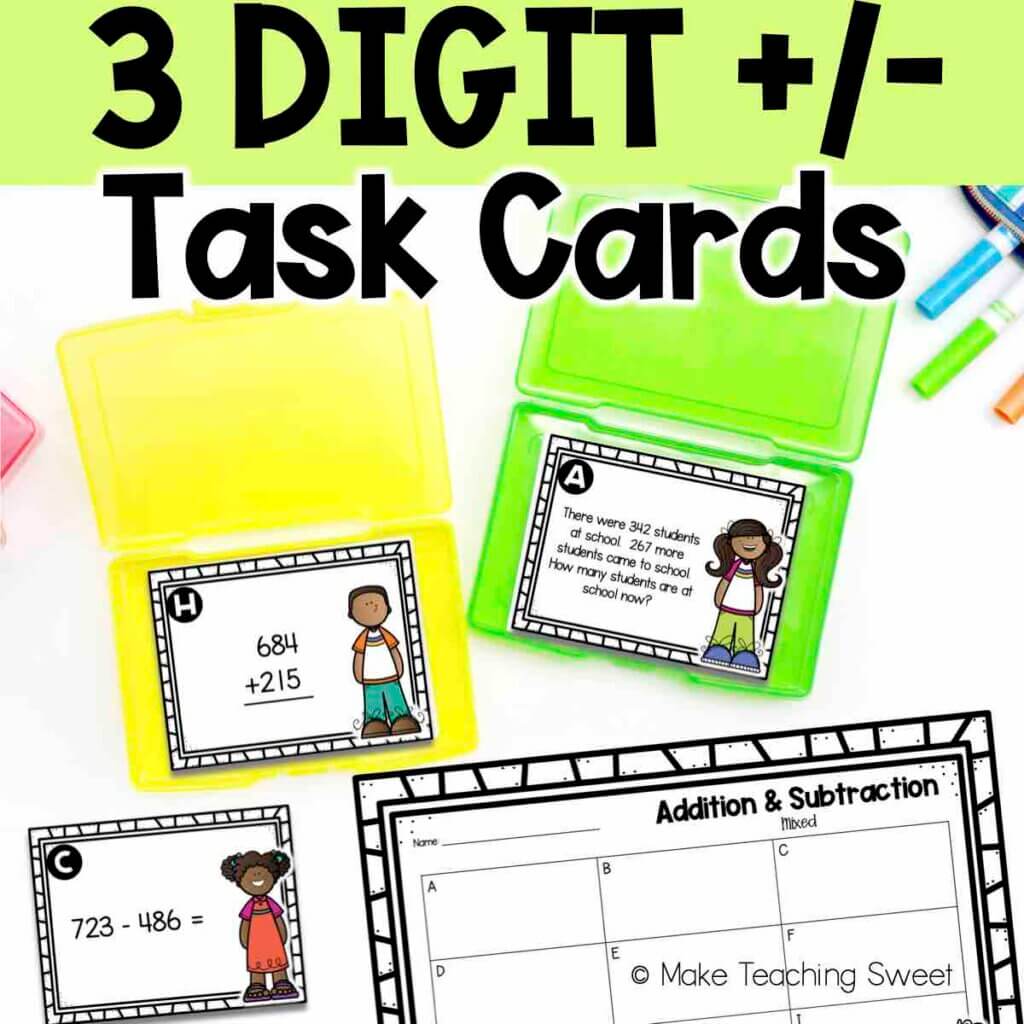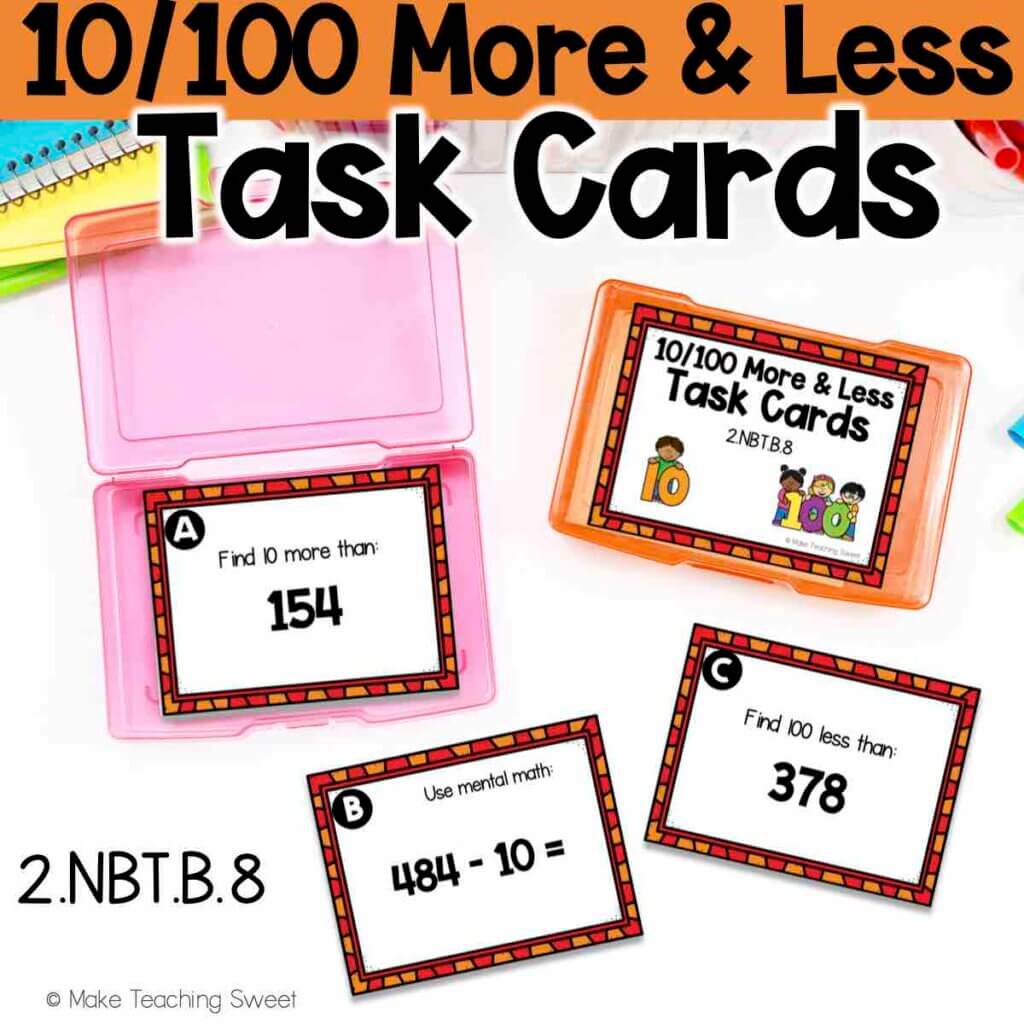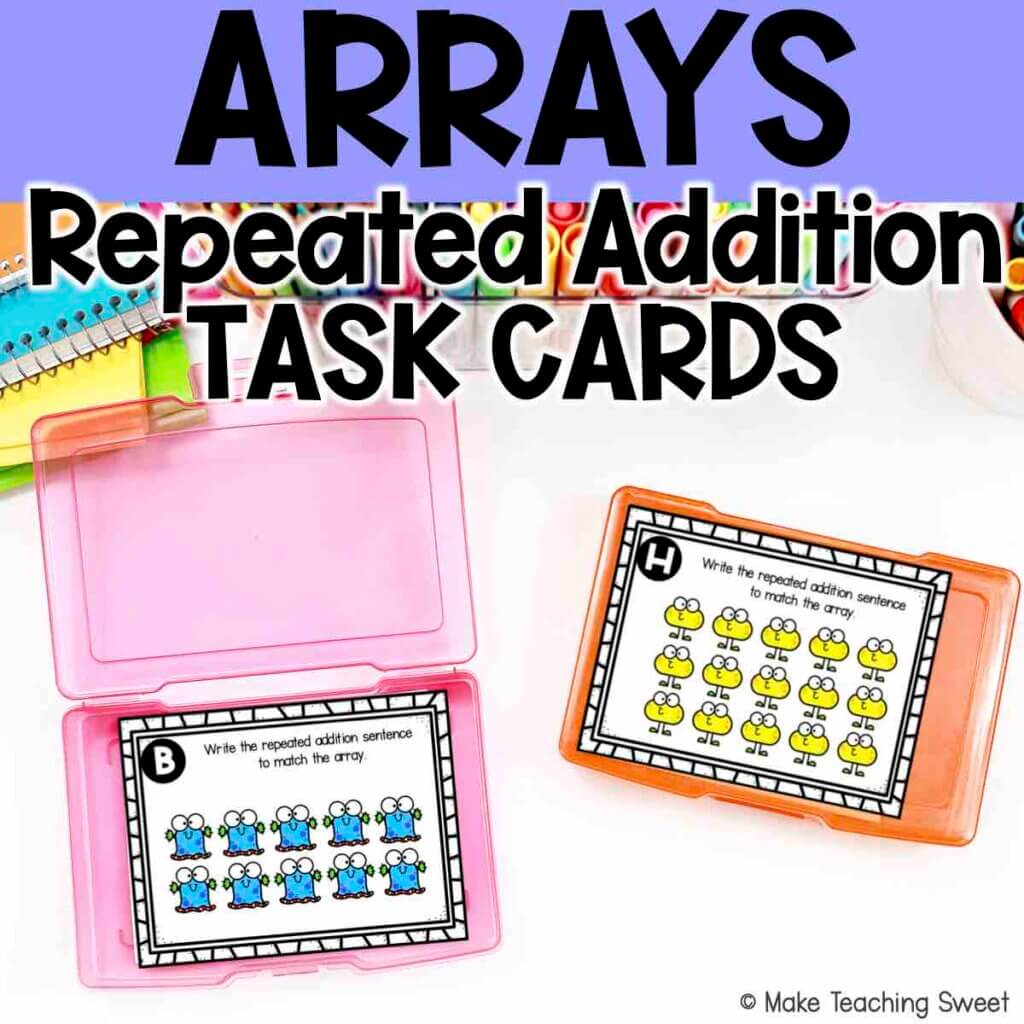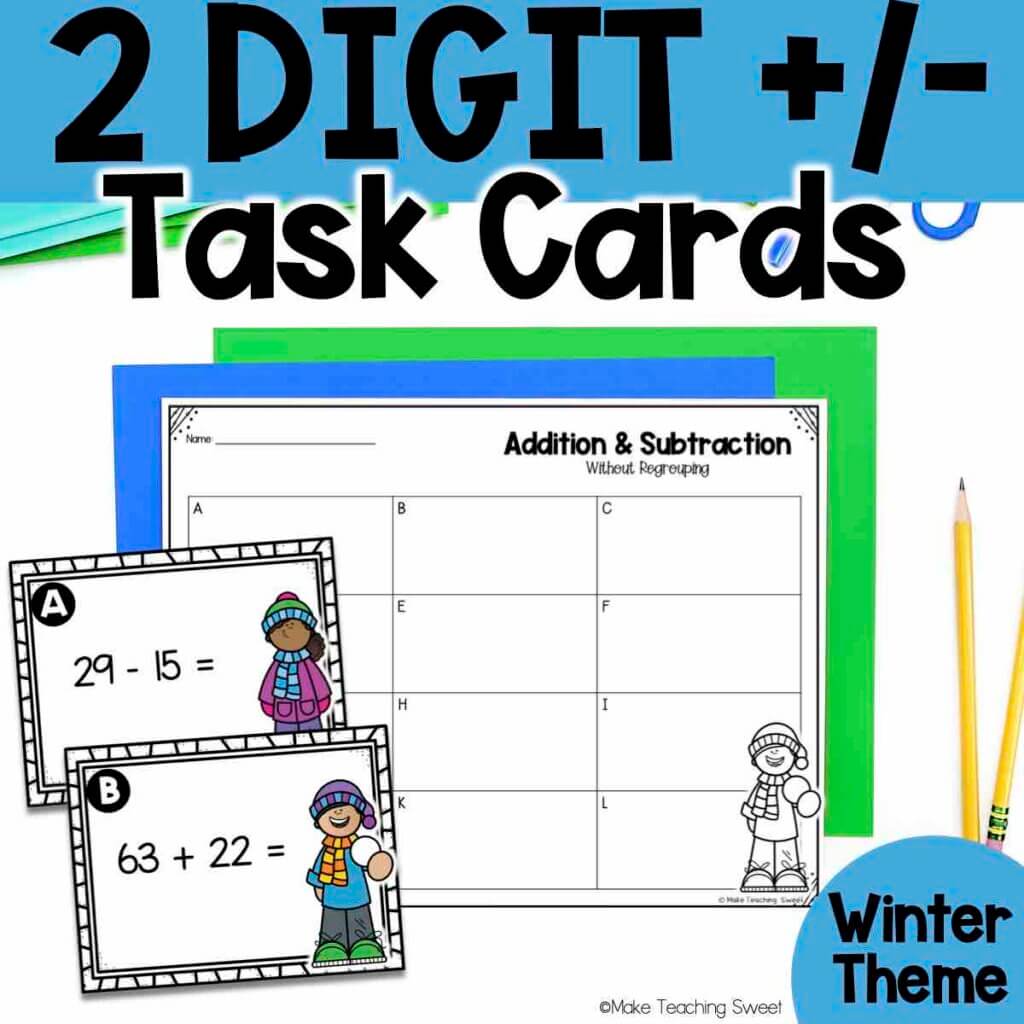Math practice without flash cards or worksheets
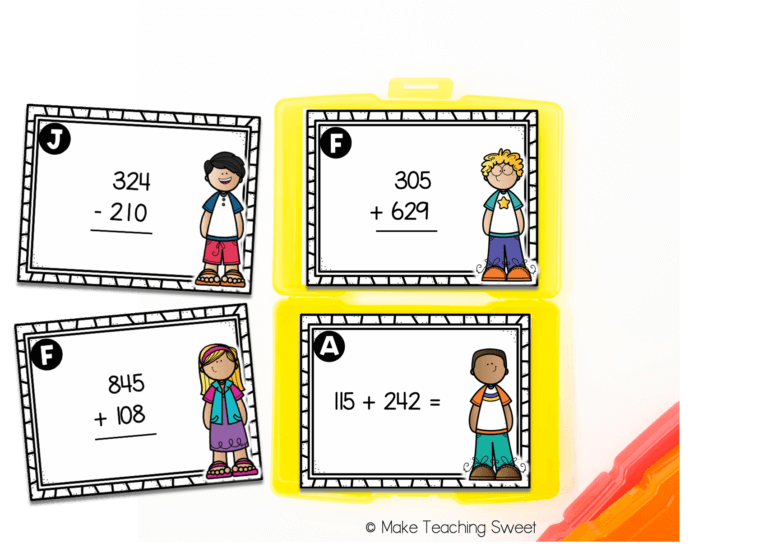
Are you using math task cards in your classroom? They are one of my favorite ways to engage first and second graders in math practice and can be used for any topic!
I love that there are so many ways to implement them in your math units, and that they let students practice skills without worksheets or flashcards.
What are task cards?
Task cards are printable (or digital) cards with a “task” on them – usually a question or math problem. Task cards are usually available in sets to focus on a specific skill or standard. Each card is numbered or lettered and corresponds to a square on a recording sheet where students can work out problems and record their answers. They are usually sized to a fourth of a page for easy printing and can be in color or black & white.
Task cards are an amazing addition to your math unit because they make math more FUN! They are an engaging way to practice math – without using worksheets or flashcards! They will also save you time, which I know is so valuable when you have students to teach. You’ll spend less time thinking of math problems during lessons or small groups, and have a comprehensive review ready for your students to use.
There are many task card options available on TPT or any teacher marketplace. You can also DIY your own task cards by simply writing a math problem or task on individual index cards!
Why I love task cards
Task cards are a fun addition to my math units. They are so easy to prepare and set up, and once I’ve taught students the routine it becomes a go-to activity for me.
I also love that students see only one problem at a time, so they aren’t overwhelmed by a whole page of math problems to solve. This especially boosts the confidence of students who need extra practice – they just complete as many task cards as they can without feeling like they failed on an assignment.
Task card are low-prep, meaning all you need to do is print, laminate, and cut out. Once you make a set of task cards, you can use them year after year! I copy a recording sheet for each student to use, but one of my coworkers simply has her students divide a page in their math notebook to save paper.
5 ways to use math task cards
1. Math Center
I use math centers daily in my classroom! Students are split into 4-5 groups and rotate through different review activities. I make sure that all activities can be done independently so that I can focus on my small group. Task cards are the PERFECT math center! Once students learn how to complete a task card activity you can simply switch out the task cards for a new review that can be done independently. Students see task cards and immediately know how to complete the activity.
2. Small Group
I love working with small groups during math instruction. It allows me to see the process my students are taking to solve math problems and allows me to provide immediate feedback. Using task cards during small group time saves me so much time – I don’t have to think of math equations or word problems on the spot! I simply hold up a task card, and each student works to solve it on a whiteboard. I am able to quickly see who understands the concept and who needs more practice. When I need to differentiate, I give each student a different task card (from the same set or different sets) and they work on their whiteboard. I love how easily I am able to provide each student with practice at their level. Some of my students may be working on addition with regrouping while others are reviewing addition strategies without regrouping.
3. Daily Warm-Up
Task cards make a great way to quickly review a little bit each day. You can put a task card under a document camera and students can work to solve in their math journal or on a whiteboard. By the end of your unit, students have had a variety of extra practice. I’m all about being intentional with every minute of my math block! You can complete this at the beginning of your math block as a warm-up, or at the end as an exit-ticket. I simply walk around the room and put a sticker in students’ math journal once I see the correct answer. I love not having to think of a new problem every day and having a quick review.
4. Whole Group Review
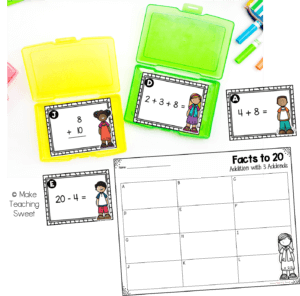
Similar to a daily warm-up, you can complete all task cards as a review at the end of your unit before an assessment. Students can work on whiteboards or on the recording sheet.
You will love being able to flip through the task cards to find problems you need – no more trying to remember what you’ve practiced or coming up with multiple new problems on the spot.
Choose to do every problem, or only a few that your students need.
5. Scavenger Hunt
Now for my FAVORITE way to use task cards! Playing as a game gets students moving and engaged while they review math skills.
To Play:
-Prepare task cards by laminating & cutting out
-Hang task cards around your classroom – on the walls, on bookshelves, on windows, etc. Make sure they are low enough for students to read, but high enough for them to find.
-Students will walk around the room with a clipboard, pencil, & recording sheet.
-They will find a task card & work to answer it on their recording sheet. They’ll continue moving around the room until they solve each one.
My students LOVE doing this as a review, and I usually plan to do it a few days before each assessment. My classroom is quiet & engaged – the sign of little minds at work!
6. Early Finisher Activity
Ever have students finish independent work early? Have a set of task cards ready to pull out for extra practice. This will help you keep learners engaged while you focus your time on students that may need extra help with an assignment.
7. Extra Activity
Ever finish your lesson early and need a quick activity? Task cards help you make the most of every minute of your math instruction – you can complete as few or as many as you have time for.
8. Substitute Day
If your students know the routine of task cards it is so easy for substitutes to implement as a meaningful activity. Hooray for less busywork on sub days! I love to leave a set of task cards
9. Group Work
Do your students sit in groups or tables? Give each group a few task cards and have them work together to solve. You can trade among groups once students are finished. You can even keep score for a fun competition to motivate learning.
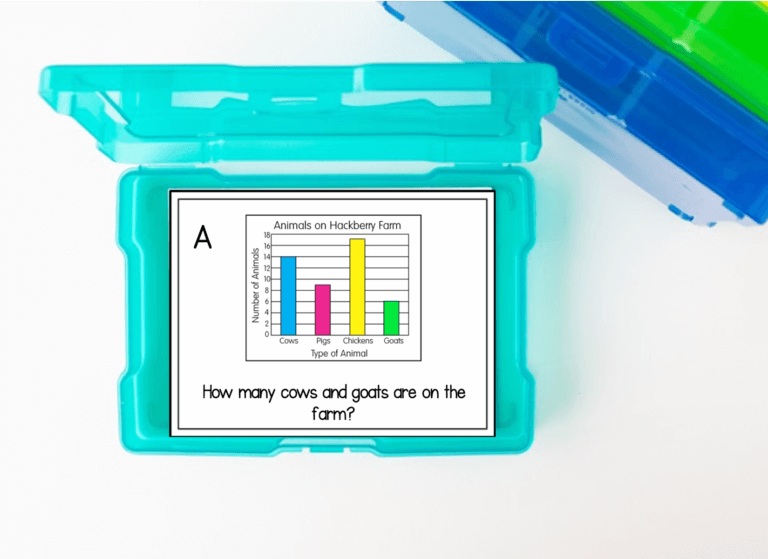
10. Mix & Match Review
This last one is out of character for me – I am a rule follower through and through. But there is no rule saying you have to use a task card set as-is. I love using them as an end-of-year review, or just as a spiral review throughout the year. I take task card sets that we’ve already used earlier in the year and choose a few from each set. Then, I create one set to be a fun review activity that covers many topics and standards.
How to store task cards
One of the best things about task cards is that once you make them, you can use them year after year. So how do you store them to keep up with them? I store most of mine in plastic bags in a filing cabinet. I have them filed by unit so that all my task cards for the unit are together. This makes it SO easy when I go to plan a unit – I can easily see which task cards I have available for centers, small groups, etc.
You can also store task cards in task card boxes. I found these to be bulky and not practical for as many task cards that I use and need to store. But these boxes would be great to keep in a math center or with your small group materials to put in the set you are working on.
I hope this inspired you to try task cards in your math units! I’m always here to answer questions you may have!

